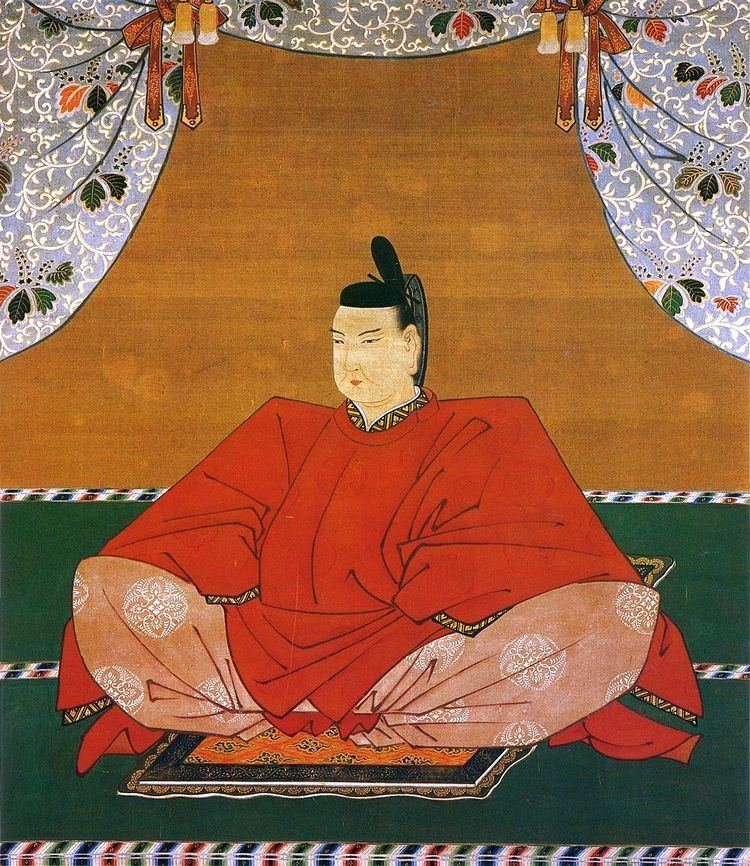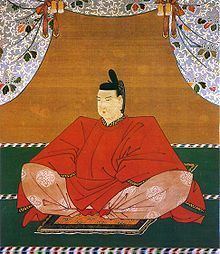Reign 986–1011 Name Emperor Ichijo | Coronation 986 Successor Sanjo | |
 | ||
Died July 25, 1011 (aged 31)Heian Kyo (Kyoto) Burial En\'yu-ji no kita no misasagi (Kyoto) | ||
Emperor Ichijō (一条天皇, Ichijō-tennō, July 15, 980 – July 25, 1011) was the 66th emperor of Japan, according to the traditional order of succession.
Contents

Ichijō's reign spanned the years from 986 to 1011.
Traditional narrative
Before he ascended to the Chrysanthemum Throne, his personal name (imina) was Kanehito -shinnō. Kanehito-shinnō was the first son of Emperor En'yū and Fujiwara no Senshi, a daughter of Fujiwara no Kaneie. Since there are no documented siblings, it is supposed that he was an only child.
Ichijō had five Empresses or Imperial consorts and five Imperial sons and daughters.
Events of Ichijō's life
His reign coincided with the culmination of Heian period culture and the apex of the power of the Fujiwara clan.
In 984, he was appointed as crown prince under Emperor Kazan. It was rumored contemporarily that his maternal grandfather Kaneie plotted to have Kazan retire from the throne.
Ichijō ascended the throne at the age of six.
A son of Emperor Reizei, who was older than Ichijō, was appointed crown prince. Kaneie became the regent (Sesshō) and effectively ruled the state. After Kaneie died in 990, his first son and Ichijō's uncle Fujiwara no Michitaka was appointed regent.
Ichijō had two empress consorts. First was Teishi (or Fujiwara no Sadako), a daughter of Fujiwara no Michitaka, second was Shōshi (or Akiko), a daughter of Fujiwara no Michinaga, a younger brother of Michitaka. Most people thought it impossible to have two empress consorts, but Michinaga claimed that the empress held two separate titles, Chūgū and Kōgō, which were different in principle and could therefore given to two different women.
The courts of both empresses were known as centers of culture. Sei Shōnagon, author of The Pillow Book, was a lady in waiting to Teishi. Murasaki Shikibu was a lady in waiting to Shoshi. There were other famous poets in the courts of the empresses.
Ichijō loved literature and music. For this reason, high ranked courtiers felt the necessity for their daughter to hold cultural salons with many skillful lady poets. Particularly he was fond of the flute. Ichijō was known for his temperate character and was beloved by his subjects.
During Ichijō's reign, Imperial visits were first made to the following four shrines: Kasuga, Ōharano, Matsunoo, and Kitano; and in the years which followed, Emperors traditionally made yearly Imperial visits to these shrines and to three others: Kamo, Iwashimizu and Hirano.
The actual site of Ichijō's grave is known. This emperor is traditionally venerated at a memorial Shinto shrine (misasagi) at Kyoto.
The Imperial Household Agency designates this location as Ichijō's mausoleum. It is formally named En'yū-ji no kita no misasagi.
Ichijō is buried amongst the "Seven Imperial Tombs" at Ryoan-ji Temple in Kyoto. The mound which commemorates the Emperor Ichijō is today named Kinugasa-yama. The emperor's burial place would have been quite humble in the period after Ichijo died.
These tombs reached their present state as a result of the 19th century restoration of imperial sepulchers (misasagi) which were ordered by Emperor Meiji.
Kugyō
Kugyō (公卿) is a collective term for the very few most powerful men attached to the court of the Emperor of Japan in pre-Meiji eras.
In general, this elite group included only three to four men at a time. These were hereditary courtiers whose experience and background have brought them to the pinnacle of a life's career.
During Kazan's reign, this apex of the Daijō-kan included:
Eras of Ichijō's reign
The years of Ichijō's reign are more specifically identified by more than one era name or nengō.
Consorts and children
Empress (Kōgō): Fujiwara no Teishi/Sadako (藤原定子) (977–1001), 1st daughter of Fujiwara no Michitaka (藤原道隆)
Empress (Chūgū): Fujiwara no Shōshi/Akiko (藤原彰子) (988–1074), daughter of Fujiwara no Michinaga (藤原道長); later Nyoin (女院) 'Jōtō-mon In' (上東門院)
Nyōgo: Fujiwara no Gishi (藤原義子) (974–1053), daughter of Fujiwara no Kinsue (藤原公季)
Nyōgo: Fujiwara no Genshi (藤原元子) (?–?), daughter of Fujiwara no Akimitsu (藤原顕光); later, married to Minamoto no Yorisada (源頼定)
Nyōgo: Fujiwara no Sonshi (藤原尊子) (984–1022), daughter of Fujiwara no Michikane (藤原道兼); later, married to Fujiwara no Michitō (藤原通任) in 1015
Court lady (Mikushige-dono-no-Bettō): 4th daughter of Fujiwara no Michitaka (藤原道隆の娘) (?–1002)
